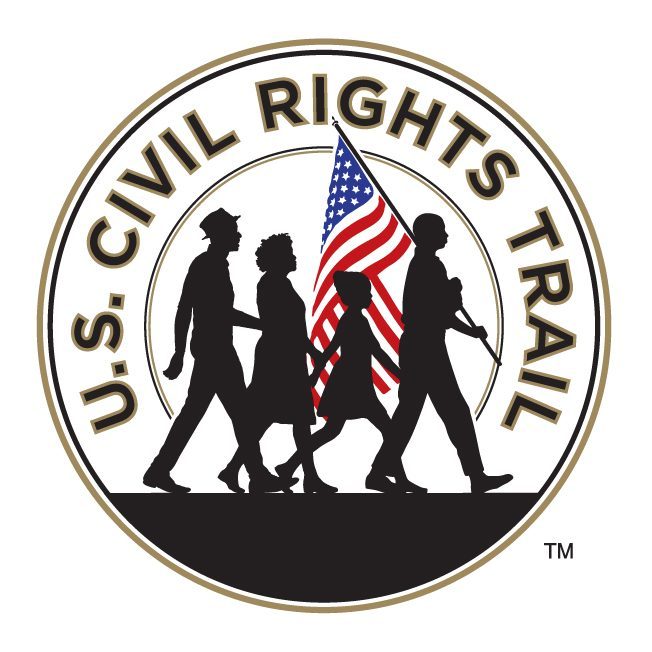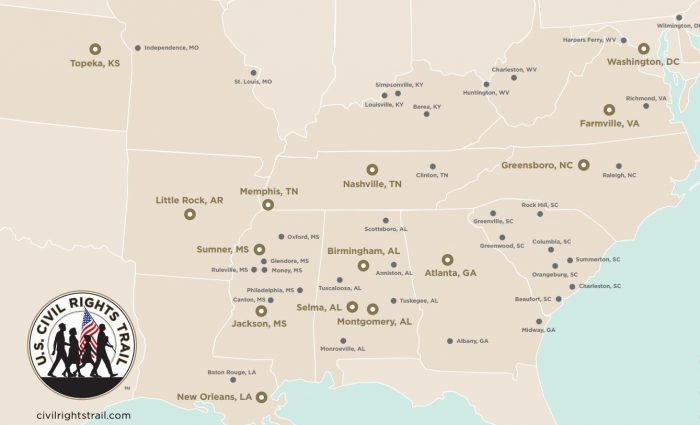West Virginia adds 3 sites to the U.S. Civil Rights Trail
West Virginia is home to three historic stops on the United States Civil Rights Trail. The trail launches with the 155th anniversary of President Lincoln’s Emancipation Proclamation and the 50th anniversary of the assassination of Dr. Martin Luther King Jr. It consists of more than 100 landmarks across 14 states commemorating the events, people and places that played a part in advancing the civil rights movement. Check out West Virginia’s stops along the trail:
 1. Elizabeth Harden Gilmore House
1. Elizabeth Harden Gilmore House
The Elizabeth Harden Gilmore House in Charleston is named after the prominent African-American and civil rights leader who lived and worked here from 1947 until her death in 1986. Gilmore helped to pass civil rights legislation and pioneered efforts to integrate schools, housing and public accommodations in West Virginia. Her accomplishments include founding a woman’s club that opened Charleston’s first integrated day care center. She also succeeded in getting her black Girl Scout troop admitted to Camp Anne Bailey in Lewisburg.
Gilmore was co-founder of the local chapter of the Congress of Racial Equality (CORE). In 1958, she led CORE in a sit-in campaign at The Diamond department store in Charleston. Due to her perseverance, the sit-in continued for 1½ years and was ultimately successful. As a member of the Kanawha Valley Council of Human Relations, Gilmore took part in forums on racial differences and helped find housing for black renters who had been displaced by a new interstate highway.
As the result of her successful push to amend the 1961 state civil rights law, Gilmore was awarded a seat on the powerful higher education Board of Regents. She was the first African-American to receive such an honor.

2. Harpers Ferry National Historical Park
As the site of John’s Brown’s 1859 raid—said to be the spark that ignited the Civil War—Harpers Ferry has a deep connection to the modern civil rights movement.
J.R. Clifford, a graduate of Storer College and West Virginia’s first black lawyer and newspaper publisher, was among the founding members of the Niagara Movement who chose the college (now part of Harpers Ferry National Historic Park) for the group’s historic 1906 meeting.
The Niagara Movement, named for an earlier meeting at Niagara Falls, emerged out of differences between prominent black leader Booker T. Washington and more radical intellectuals led by W.E.B. DuBois. Washington wanted to work more closely with whites to improve the economic status of African-Americans, but his critics sought a more militant approach.
The Harpers Ferry meeting took place Aug. 15-18, 1906, during which attendees discussed how to secure civil rights for African-Americans. The event culminated in a historic walk from Storer College to John Brown’s Fort, where DuBois dedicated the group’s mission to Brown, who had sought to end slavery.
The Niagara Movement dissolved in 1911 when it was absorbed into the newly created National Association for the Advancement of Colored People (NAACP).
 3. Memphis Tennessee Garrison House
3. Memphis Tennessee Garrison House
Built circa 1920 and listed on the National Register of Historic Places, this two-story frame house in Huntington was the home of teacher and civic activist Memphis Tennessee Garrison (1890-1988) for the last 40 years of her life.
A graduate of Bluefield State College, Garrison taught school in McDowell County and worked at the U.S. Steel Company in Gary to help settle racial disputes, counsel black miners and their families, and develop cultural and recreational opportunities for the African-American population. Garrison also helped to found and sustain NAACP chapters throughout southern West Virginia.
Garrison was the first female of the West Virginia State Teachers Association and served as vice president of the American Teachers Association, an organization of teachers working in segregated schools. After her retirement, she moved to Huntington, where she worked as a substitute teacher and continued her civic activities within the African-American community.
The Carter G. Woodson Memorial Foundation, which now owns the Memphis Tennessee Garrison House, is in the process of renovating the home into a civil rights and black history museum.
How many have you visited?
This post was last updated on March 17, 2022








